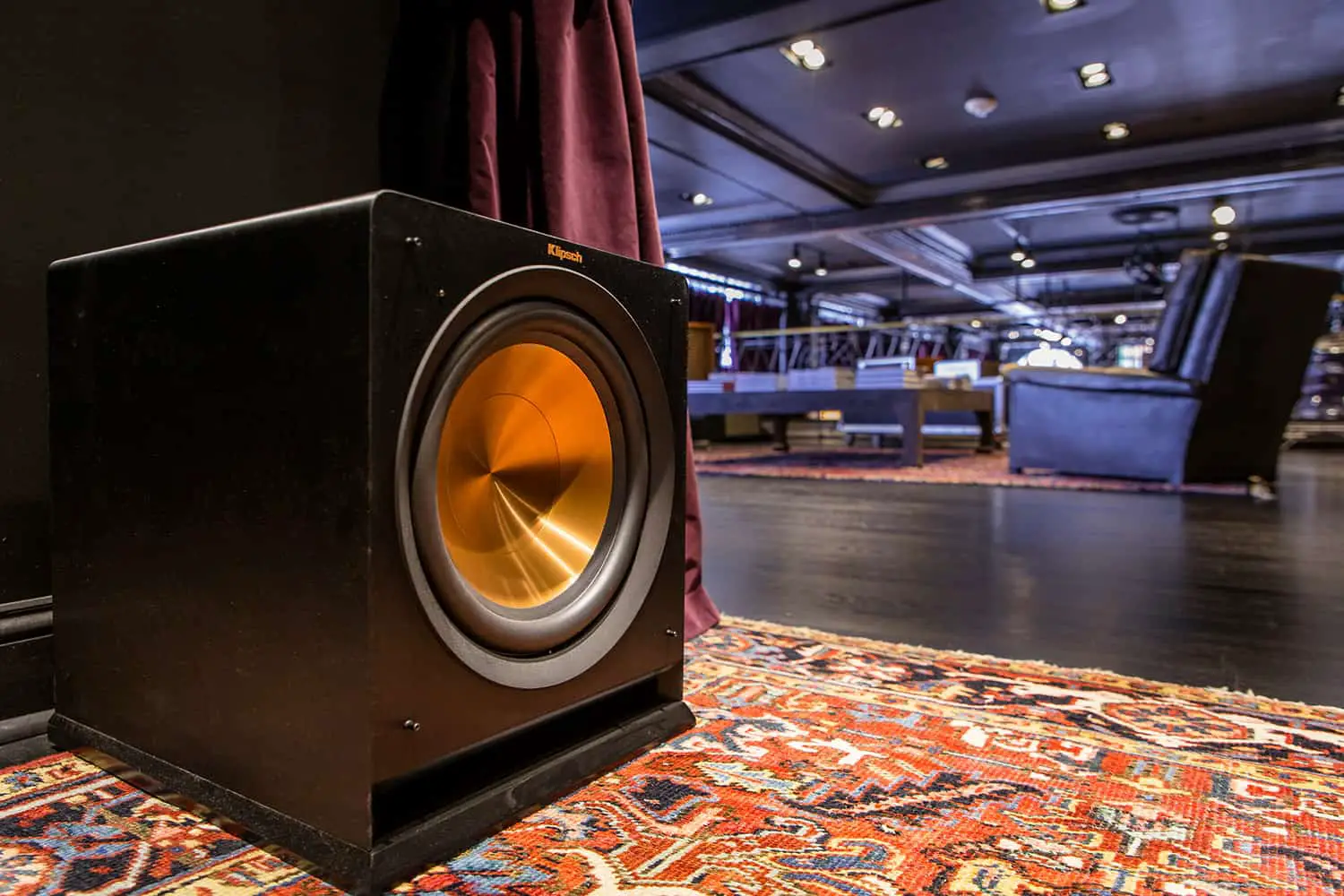Complete Guide of Buying the Best Subwoofer
How to choose an entry-level subwoofer is undoubtedly very difficult for many users who are new to the audio system. But here, you don’t have to worry about it. The following will systematically introduce you to the relevant knowledge of subwoofer introduction, and how to choose a suitable subwoofer. And here is the subwoofer buying guide.
What does a Subwoofer do?
A subwoofer is a type of speaker used to enhance bass output and try to make bass deeper. With it, the sound can be restored more firmly. Without it, it gives people a feeling of lack of power and energy.
Adding a subwoofer (especially active) to the sound system will increase the dynamic range of the system and make the low frequency dive deeper. At the same time, it will also make the intermediate frequency transparent better, and the sound reproduction will be more unrestricted and louder.

The audio system can replay the peak of the music at a higher level due to the increased low-frequency power. And because the main speaker is no longer responsible for replaying the bass, it can be played with loud sounds. Because the cone of the woofer of the main speaker no longer needs to be moved back and forth as intensely as before, the midrange will be clearer when used to replay music.
Active vs Passive Subwoofer
The subwoofer has both active and passive. At present, the most popular among home theaters is the active subwoofer. After all, the subwoofer requires a lot of power. Many AV receivers do not have enough driving force. Therefore, independent passive subwoofers are in the professional audio field more often. It is relatively rare in the consumer audio field. The active subwoofer is a built-in power amplifier module. At present, the mainstream use of most home theaters is the active subwoofer.
Sealed vs Ported Subwoofer
This is the most important question people ask when searching for the subwoofer buying guide. According to whether the inside of the cabinet is connected with the outside, there are two kinds of subwoofers, the divided into sealed and ported subwoofers. Sealed subwoofer, as the name implies, the whole cabinet is closed, and the air compression inside the box produces the low-frequency output. Its characteristic is simple structure, better transient response, deep and clear hearing. The disadvantage is that the cut-off frequency of low-frequency dive is higher than other types of speakers in the same volume. If you want to get a lower low-frequency dive frequency, you usually need a larger cabinet and use a larger-calibre speaker. Besides, the efficiency or sensitivity of the speakers is also better than other types of speakers.
The ported subwoofer leads the radiation wave of the unit through the hole. Generally speaking, the port has a circular design and only one. However, some subwoofers may also design two or more ports to help users adjust the output energy and improve the listening experience. Some of the subwoofer’s port even has a bar design for a higher degree of integration and aesthetics.
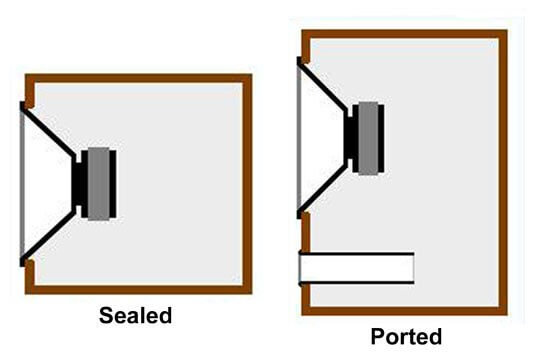
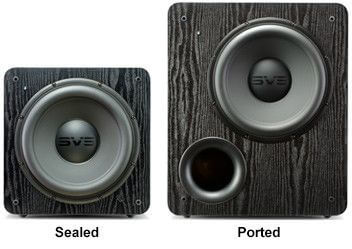
Pros and Cons of the Sealed & Ported Subwoofer
The advantages of the sealed subwoofer are good texture, fast speed (transient), bright and clean sound, and relatively small size. The disadvantage is that it requires more power.The ported subwoofer has a good dive and enough energy, and it is determined to be thick and low-frequency, making it easy to produce airflow sound.
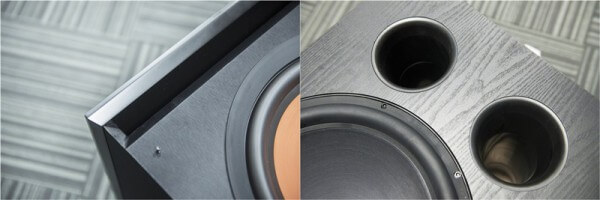
How to choose a Subwoofer
First and Foremost: Frequency Response
This parameter represents the low-frequency “dive” key index of the subwoofer. That is, how many Hz can the subwoofer output capacity reach the lowest frequency. Typically, humans can hear sounds as low as 20 Hz, but subwoofers that can achieve this frequency are generally more expensive.
As for how much the upper-frequency limit of the subwoofer can be reached, don’t care too much. Generally, around 160-200Hz is acceptable. Why? Because usually above 120Hz, the midrange woofer has already taken over. This indicator is determined when the subwoofer is designed, manufactured, and shipped from the factory, and cannot be changed.
It is not easy for consumers if you can buy a subwoofer with a dive of about 20Hz at a very affordable price.
For some entry-level low-end subwoofers, their dive is usually not lower than 40Hz. If the frequency is low, the distortion is serious. If there is not enough dive, it means that the foundation is not reliable enough, and the remaining parameters can only become empty talk.
Why is it not easy to dive the bass to 20Hz?
It is due to the physical characteristics of the sound.
For a standard speaker system, the sound that can be heard by the human ear is driven by the diaphragm of the speaker unit, and the air is pushed back and forth at a specific frequency. The air vibration is transmitted to the eardrum in the ear and becomes a signal that can be sensed by the human brain, Eventually becoming the voice that people hear.
At what frequency, the diaphragm must vibrate. If you want to emit a 20,000Hz high-pitched sound, the diaphragm must vibrate the same number of times per second. Similarly, a diaphragm that vibrates 20 times per second will emit a 20Hz bass.
I don’t know if you noticed an interesting phenomenon. The tweeters are all small, while the bass units are all big. In fact, when you think about the sounding principle carefully, it is not difficult to understand that the tweeter is small because it needs to be as light as a bird and vibrate quickly. The caliber of the woofer is so large because of an iron-like law: the lower the sound frequency, the more air the unit needs to push to make the same loud sound. From 80Hz to 40Hz, it requires four times, from 40Hz to 20Hz, it needs four times, a total of 16 times the amount of air!
For example, a sealed speaker with a 5.25-inch woofer can achieve a sound pressure level of 100dB @ 80Hz when the unit has a maximum stroke of 12.5mm. But if you want this 5.25-inch unit to reach the same 100db sound pressure at 20Hz, guess how much distance the unit needs to move?
The answer is 200 mm (16 times: 80 Hz => 40 Hz x 4 times, 40 Hz => 20 Hz, and multiplied by four times). That is an extreme long stroke subwoofer.
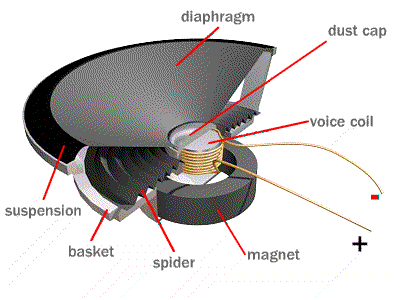
No unit has such a long stroke, so we can only rely on increasing the size of the unit to reduce the stroke of the unit’s front and back movement to produce a 20Hz bass that can be perceived by the ear. That is why there are 10 inch subwoofer,12 inch subwoofer, 15 inch subwoofer, or even 18 inch subwoofer. Bigger size makes a powered subwoofer.
Secondly: Maximum SPL
Looking at a single parameter alone cannot solely determine the quality of this subwoofer. Why is an excellent subwoofer capable of outputting a sufficiently high sound pressure level? First, put a hearing curve on the human ear.
In simple terms, the curve in the figure shows that the human ear has different sensitivity to sound at different frequencies. This up and down curve (variable sound pressure level) is the same in human hearing.
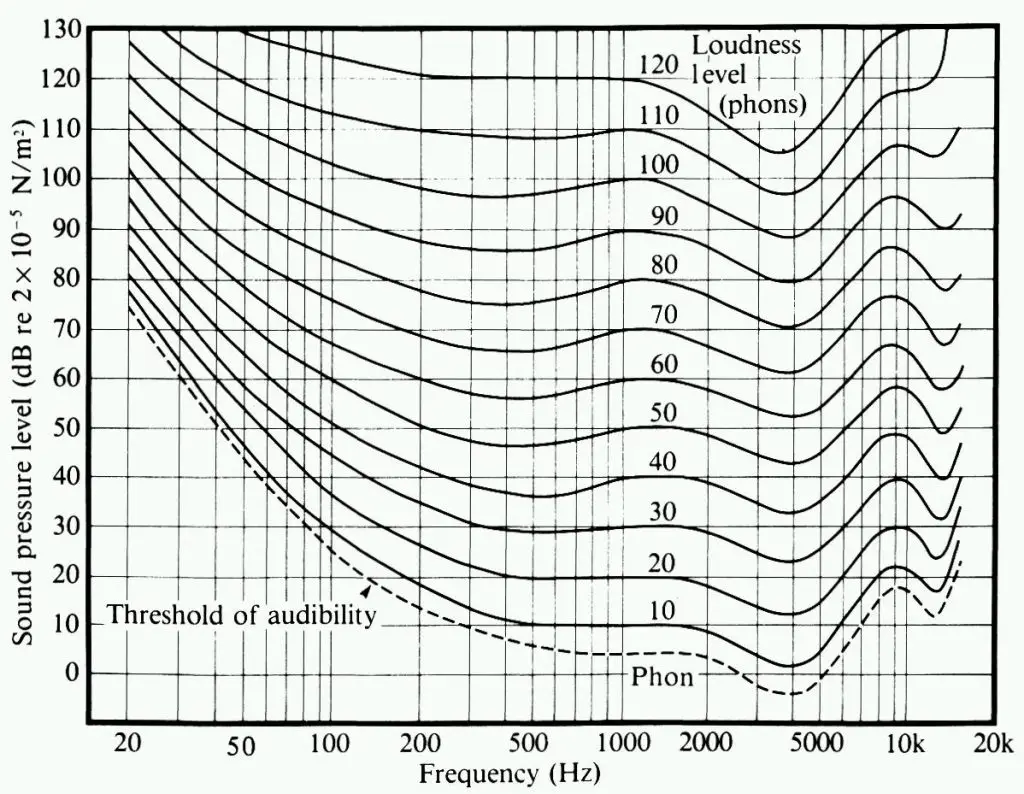
80dB at 1,000Hz sounds almost the same as 120dB at 20Hz, which is a full 40dB difference. At 20Hz, 80dB is the threshold of hearing, and the actual sound is very light, barely audible.
That is why the maximum output sound pressure level is critical among the parameters of the subwoofer. Because the human ear is not sensitive to low frequencies, it needs a high sound pressure level to feel slightly. If the subwoofer’s voice is low, don’t mix it out.
- A subwoofer can nominally dive to 20Hz, but if it can only emit a sound pressure of 70dB at 20Hz, it is far from enough.
- If a subwoofer capable of emitting 120dB sound pressure at 60Hz, its dive is only 35Hz, we still cannot accept it as a qualified household gun.
- Only in a sufficiently wide frequency response range (such as 16hz-100hz), this subwoofer can reach a reasonably high output sound pressure level. We think it is qualified.
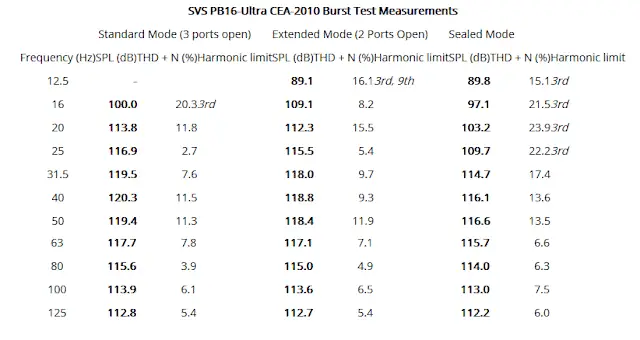
Last but not least : Subwoofer Size & Number
If not all manufacturers are willing to announce the maximum output sound pressure parameter, the majority can continue to refer to the third important parameter.
As mentioned in the first element, to push a large amount of air and emit extremely low frequencies that can be perceived by the ear, the subwoofer has to use a large enough unit, or use multiple smaller units together. Moreover, the size and number of the woofer are closely related to the maximum sound pressure level that the subwoofer can reach. Therefore, if you want to know the strength of a subwoofer, you can judge from the unit configuration.
So the question is, is the larger / more subwoofer, the deeper the dive, the louder the sound? The answer is, of course, no. This judgment method is only applicable to ordinary household subwoofers. Never pull in the large passive subwoofers used in commercial theaters. Different uses, the characteristics of bass are entirely different. Some are particularly overwhelmed with the bass effect in the theater, so they want to set up a theater system at home.
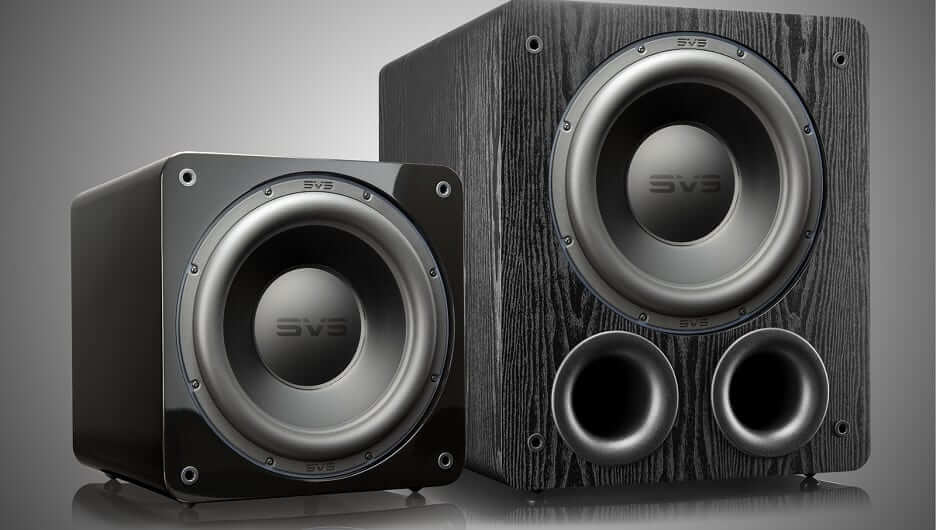
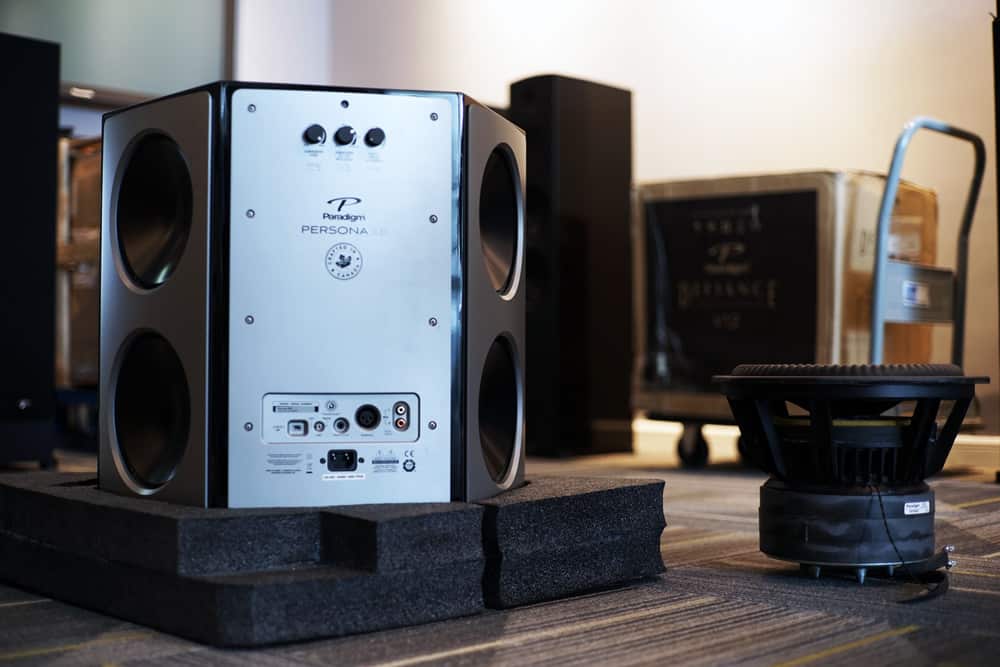
If you don’t have a large room and professional theater setting technology, it is better to give up this idea. In an ordinary home environment, the most prominent frequency band of professional subwoofers often coincides with the standing wave frequency due to the physical size of the house. If you don’t do anything, the sound is a mess. The most important thing is that even the 18-inch professional subwoofer, its dive is still rarely able to reach 20Hz, often cut off to 30-35Hz. That is a compromise made by integrated speakers, power amplifiers, and other equipment in a large space environment.
Other Elements about subwoofer buying guide
1.Subwoofer box material
The current subwoofer box materials are plastic and wood, and some high-end will use metal. Initially, wood speakers were considered better than plastic speakers, but this idea is currently not perfect. The sound quality of some well-made plastic speakers is far better than the rough-made wooden speakers. Therefore, when selecting speakers, weighing components is a critical step. If a sizeable wooden speaker is very light, then its performance will not be better.
2.Diaphragm material
The diaphragm material refers to the manufacturing material of the speaker diaphragm. Among them, the diaphragm material of the tweeter is plastic, silk, and metal. The diaphragm material of the woofer includes paper cone, polyethylene cone, wool cone, aluminum-magnesium alloy cone, etc.
These materials have different properties and prices. It’s hard to say who is superior and who is inferior. If you like orchestral music, choose paper pots and wool pots. If you like metal music, use polyethylene cone. In a humid environment, paper cones and wool cones should be used as little as possible, which is easy to absorb moisture and change the sound quality.
Conclusions: Three Key Elements for choosing a Subwoofer
- First look at Frequency Response, to ensure that the desired “complete low frequency” can be restored. A qualified subwoofer must be able to dive to 20 Hz (lower hearing limit of the human ear) or lower.
- Second, look at Maximum SPL. In the frequency response range, extremely low frequency (20 ~ 30Hz) can output more than 100dB, low frequency (30 ~ 100Hz) can output more than 120dB.
- Finally, look at the caliber and number of sound units. 18 inch subwoofer, generally used in flagship products. 15 inch subwoofer, high-end products, enough. 12 inch subwoofer, the situation is the most complicated, and the specific situation is analyzed in detail. 10 inch subwoofer, entry-level, if you don’t use 2 or more units, it is challenging to have enough strength. 6.5 inch subwoofer, it is difficult to meet the needs of bass.
Common Questions with Subwoofers
1. One subwoofer or multiple subwoofers?
If you can only place one subwoofer in your room, or your current budget can only buy one subwoofer, buy the best one.
In a system with two or more subwoofers, the system’s overall performance is more important than the performance of a single subwoofer. Therefore, if you want to build a system with multiple subwoofers, the performance of a single subwoofer does not need to be too powerful.
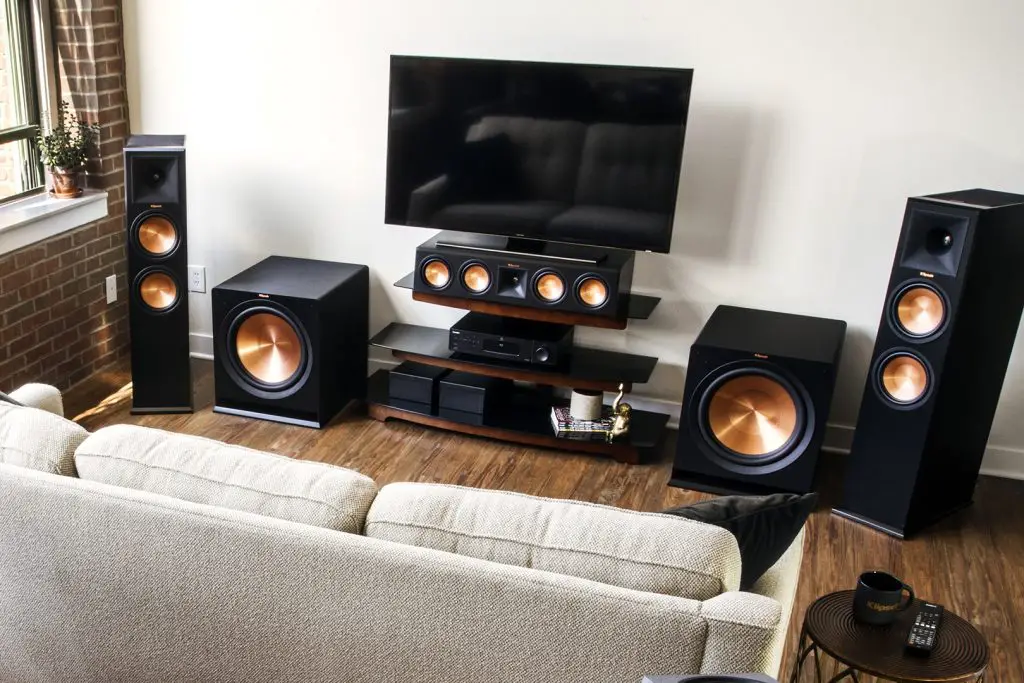
When the number of subwoofers in the system doubles, you need to increase the output by 6 dB. Therefore, you can lower the overall subwoofer level, and each subwoofer can achieve the desired volume in the room without too much effort.
If you are equipped with multiple subwoofers, their models do not have to be precisely the same, but the performance is best to be relatively close.
2. The bass performance of the left and right channel units is outstanding. Do I need to add a subwoofer?
The AV system cannot determine whether the entire set’s mid-range and low-frequency range (especially the low-frequency part) is sufficient by the size of the speaker alone. The reason is that the conventional multi-channel system will most likely hand over the sub-woofer to the frequency band below 80Hz or 90Hz in the response frequency band. Of course, if you don’t have a subwoofer user, you can set the front left and right channels to the full range from the AV receiver menu.
However, such a 5.0 channel and 7.0 channel settings will inevitably impose a more significant burden on the front left and right channels and the amplification circuit of the AV receiver itself. Even if you use high-efficiency left and right channels and high-power output AV receivers, the low-frequency performance should not be much better than using a separate active subwoofer.
Next, the dedicated active subwoofer can independently adjust the volume, crossover point, and phase. Individual cabinets can also freely choose the location according to space and speaker placement. The calibration part also has a more flexible adjustment space than the 5.0 channel.
3.About adjusting the crossover point of the subwoofer
Active subwoofers are generally equipped with crossover adjustment functions. Due to the built-in crossover adjustment on the subwoofer, it is a low pass filter that can pass signals below a fixed frequency band through an adjustable LPF (Low Pass Filter). That is to say, if the knob is set at 80Hz, LPF will let the input signal below 80Hz pass and will filter out the frequency band above 80Hz.
After figuring out the crossover point of the subwoofer, when we set the crossover point of the subwoofer, we can use it as the reference for adjusting the subwoofer crossover point according to the low-frequency extension of the speaker. For example, the speakers’ low-frequency response is marked as 60Hz, and the horn may be gradually attenuated below 80Hz. When adjusting, we can preset the subwoofer crossover point to about 70Hz.
For example, most of the HPFs set by the AV receivers for the front left and right channels are mainly in the frequency band above 80Hz. At this time, the signal below 80Hz will be transferred to the signal output terminal connected to the subwoofer. Then we can Set the crossover point of the subwoofer to 80 Hz. In this way, not only can the internal amplifying circuit of the subwoofer work more efficiently, but the low-frequency sound emitted by the subwoofer will also be much cleaner.
4.How to place the subwoofer
1. Try not to place the subwoofer close to the speaker’s back wall, and try not to put the subwoofer in the corner
When using the subwoofer, it is best to let it have enough space, so that its low-frequency energy can be naturally spread evenly. Sticking to the wall on the back is a habit of many people placing equipment, which will affect the energy reflection of the bass more or less. It is easier to accumulate energy in the corner, and it is challenging to place the subwoofer here to get clear and shocking low frequencies.
So, where would the subwoofer be placed better? In general, placing a half or a third of the speaker’s size away from the wall, using the wall for even diffusion, will usually have a good effect. Of course, there is no absolute one. Each spatial characteristic is different, so you have to try more.
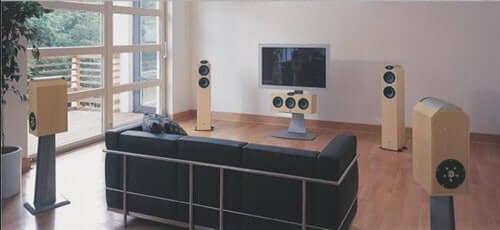
2. The volume and crossover frequency should not be adjusted too high for the first time
For the first time using the subwoofer, it is easy to overshoot the low-frequency component and set the crossover point too high. As a result, the low frequency sounds very powerful, but the details are difficult to hear and oppress Feeling too heavy. People feel uncomfortable after listening for a long time.
A good bass sounds like it has enough volume, fast speed, lightness, and not bloated. If you think the shock is enough after adding a subwoofer, but the low frequency is not clear, it sounds strange. You always pay special attention to whether the bass exists, then you should carefully check whether the volume and distribution point of the low frequency is adjusted. It’s too much.
3. Adjust repeatedly
he low frequency has a longer wavelength and is more closely related to space than the middle and high frequency. Sometimes turning the subwoofer at an angle can hear the sound changes. May wish to try more from different angles to adjust the placement, crossover frequency settings, phase changes, etc.
What should I do if a subwoofer feels insufficient volume no matter how it is placed? Perhaps placing it directly in front of the toes or behind the seat will solve most of the problems. All these need to be bold to assume, try, and see the actual effect to know.
